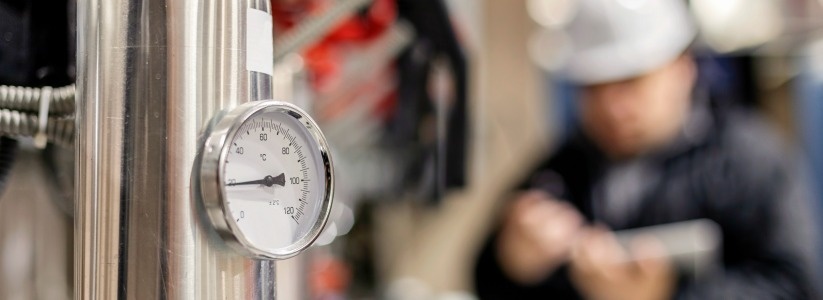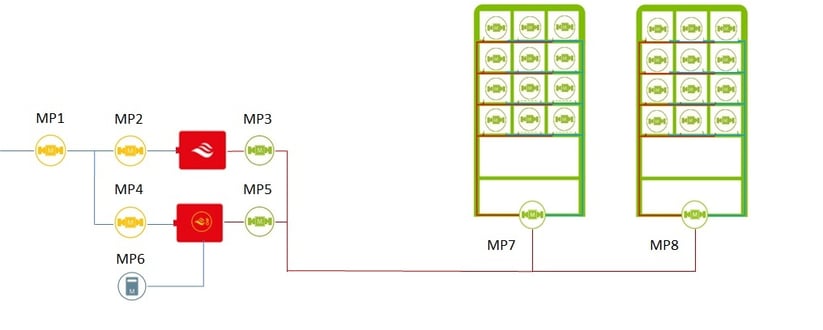As a building/energy manager with a portfolio of residential buildings supplied with heating and hot water from a community heating scheme; you will be well aware of the associated economic and environmental savings that can be made to benefit your residents and address fuel poverty. The question is, how do you do it?

Firstly, is your scheme underperforming?
It is generally accepted that the standard of operations on current schemes, especially when it comes to financial performance, is very poor. An understanding of how your system is actually operating is essential to maximising the performance and efficiency of the system - and the key factor is - reliable information. The best way of establishing this information, is measuring the system parameters through the use of metering technology.
Measure to improve using metering
Meter reading data is extremely useful for producing detailed energy profiles - not just for calculating forecasts of future demand, but also to indicate how heat energy is actually being used - and potentially if there are any heat losses. Analysis of readings from strategic points around a heating system will determine how much of the heat generated in the system’s energy centre is finally delivered to your building and to your customers; from this your heating system’s overall efficiency can be calculated.
It is important to know exactly where meters are located within your system, this is normally presented on a schematic drawing, identifying meter points. Metering schematics are a good way of understanding in non-technical terms what is going on in your district heating scheme, and where you should consider metering to understand where your heat losses are.

Think about the following meters:
- Your main gas meter
- A meter at the outlet of the heating plant room – to measure generated heat output
- If the system is shared or is fed via long distribution pipework from an external plant room - a ‘point of entry’ meter for the building, measuring heat just before customer take-offs - this measures and confirms that there are no heat losses throughout the network
- An individual meter for each apartment – to measure how much heat is used by each customer
Challenges of metering
There are two challenges with metering; Firstly having enough meters to give you useful information, and secondly; Getting the meter readings in a reliable and timely fashion.
So how do we do this? A good start, if you have nothing else - is to focus on the main supply meters and ask your suppliers to arrange for daily or half hourly readings. You can also speak to an independent sub-metering provider who can make arrangements to connect automatic meter systems (AMR) to these meters.
Control monitoring
You should not confuse a metering system, with your building management system (BEMS). BEMS is there to control the boilers and plant, and it is the BEMS systems that you will use to make changes to how the system runs to improve performance. Deploying a metering strategy, can help you to check how efficiently the BEMS is managing your system.
System improvements
For example, system pumping costs are often ignored or hidden in other costs. However, pumping costs can have a significant impact on your total operating costs. A submeter on the pump’s electricity supply will expose the real costs of pumping. So, what are those costs? If you understand your pumping costs from metering then, you can make a case for modifying your BEMS strategies or replacing the pumps to maximise efficiencies and reduce costs for residents.
Pumps are often seen running at their set speed for maximum flow, even at times when lower return temperatures are required and lower flow rates could be accommodated. Variable speed motors and inverter drives to control motor speed and pump flow rate should definitely be considered as a replacement for fixed speed pump motors, particularly as the payback periods for changeout works can be as low as 18 months!
Holistic approach
You should consider the entire heating system, and not just the plant room. For example, how each of the system parts work together harmoniously, are the radiators in each apartment balanced, if not - your return temperatures will be too high and have you got the systems in place to locate any heat losses? By taking an holistic approach you can marry up each parts of the heating system and meet your objective of lowering costs for your residents and addressing fuel poverty.
Key takeaways
- Remember, an efficient heating system reduces the cost for the resident
- Measure to improve your efficiencies by utilising metering
- Monitor your systems by utilising a BEMS system accompanied by a full metering strategy
- Always look out for ways to improve your system efficiencies



